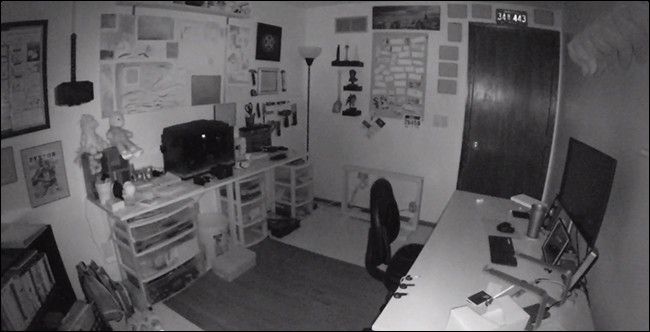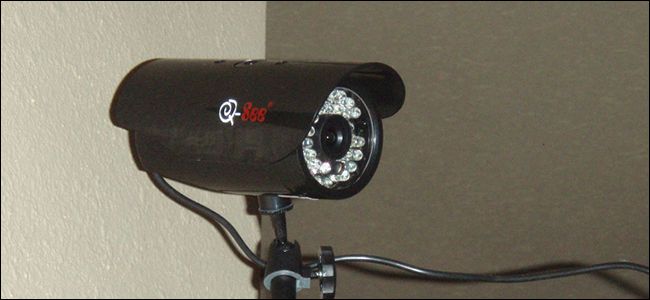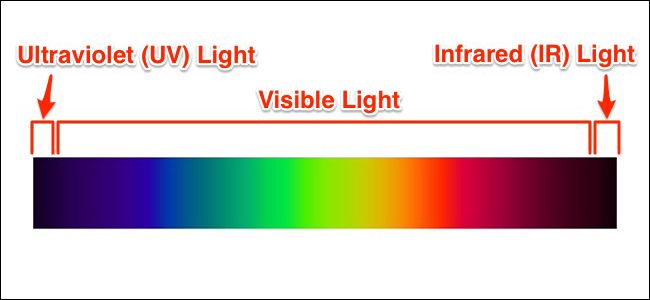Quick Links
Most security cameras come with night vision, which allow them to still see things even if it's pitch black outside. But how does it work?
If you don't know what we're talking about, then you've probably at least seen night vision footage from those ghost-hunting TV shows---that black and white or black and green look is all too familiar. Many security cameras also include that same night vision technology, allowing them to capture footage even when it's dark out.
Infrared Night Vision Bathes The Area in Light That's Invisible to Our Eyes
There are a couple different types of night vision: One that most security cameras use, and one that night-vision goggles use. The most common type that's used on most security cameras is infrared (IR) night vision, which relies on infrared light.
If you've ever looked at the front of a security camera, you've probably noticed that it's covered in a handful of small LED bulbs. This is the IR light, and when it gets dark out, these lights turn on and act as a flood light of sorts, dousing the camera's field of view with infrared light.
The thing is, infrared light is completely invisible to the naked eye. So it doesn't look like a bright light is flooding the area from the outside, but it actually is---your eyes just can't see it.
Furthermore, night vision footage from security cameras always looks black and white because human eyes can differentiate between black and white better than they can with other shades of colors, like red or blue. Because of that, most night vision cameras switch to a monochrome filter to make it easier for us to see the image.
Most security cameras that have night vision capabilities, including the Nest Cam, also have what's called an IR cut filter. This automatically detects daylight and applies the filter to block out the IR light during the day in order to keep colors looking accurate. When nighttime arrives, the filter automatically gets removed, which lets more light in, including the IR light coming from the camera.
Intensifier Tubes Absorb Whatever Light They Can, and Amplify It
There's also another type of night vision, and it's more often found in night-vision goggles which contain something called "intensifier tubes." In the most basic of terms, it involves using an extremely sensitive camera sensor that cranks up the intensity.
In more advanced terms, the available light that enters night-vision goggles (consisting of photons) gets turned into electrons, converting the light into an electronic signal of sorts. The electrons are then multiplied using a photomultiplier and then pass through a phosphor screen, which creates flashes of light that results in a brighter image.
All of the colors of light that enter the goggles are converted to a shade of green after they go through the phosphor screen, which provides that iconic look that you're likely familiar with---human eyes are much more sensitive to green than most other colors.
Night vision goggles are possible because it's never truly pitch black outside---it's just very, very dark. In fact, it's very difficult to block out all light unless you're actively trying to do so. Night-vision goggles can take the little light coming from the moon or street lights and amplify it.
A regular camera can do something similar. Go into a dark room in your house (or go outside at night) and take a long-exposure picture using a camera (if it's capable of taking long-exposure shots). The resulting image will be much brighter than what you actually see, since the camera is taking all the available light there is and amplifying it. If there was absolutely no light available, the camera wouldn't be able to capture anything, no matter the exposure.
Again, though, this type of night vision is usually only found in night-vision goggles, and most security cameras that come with night vision capabilities rely on IR light, which is much cheaper to implement and gives you better image quality overall.
Image Credit: thekirbster/Flickr.




